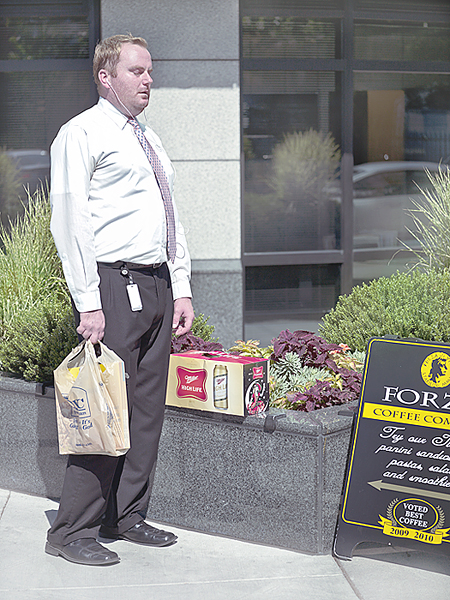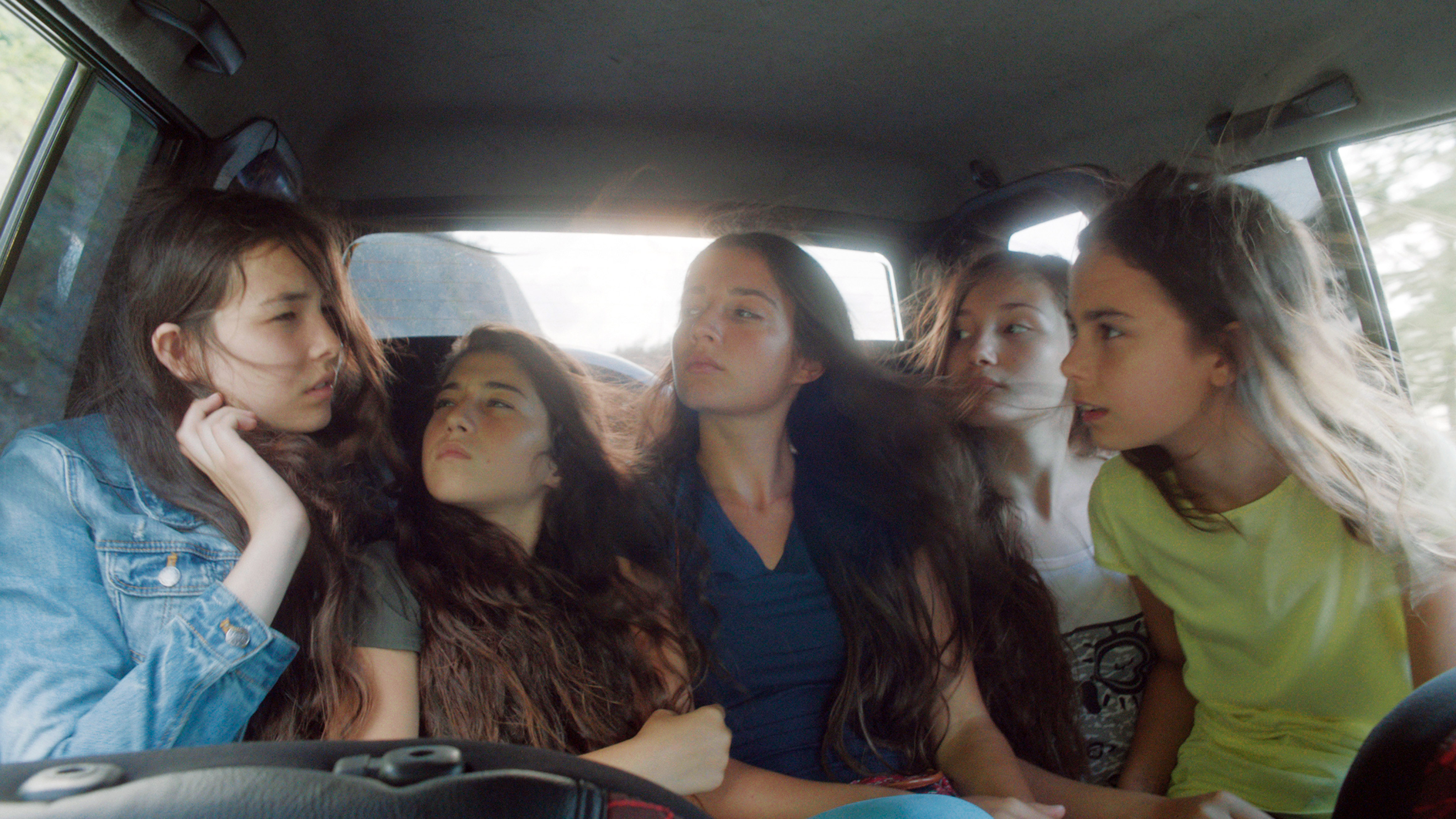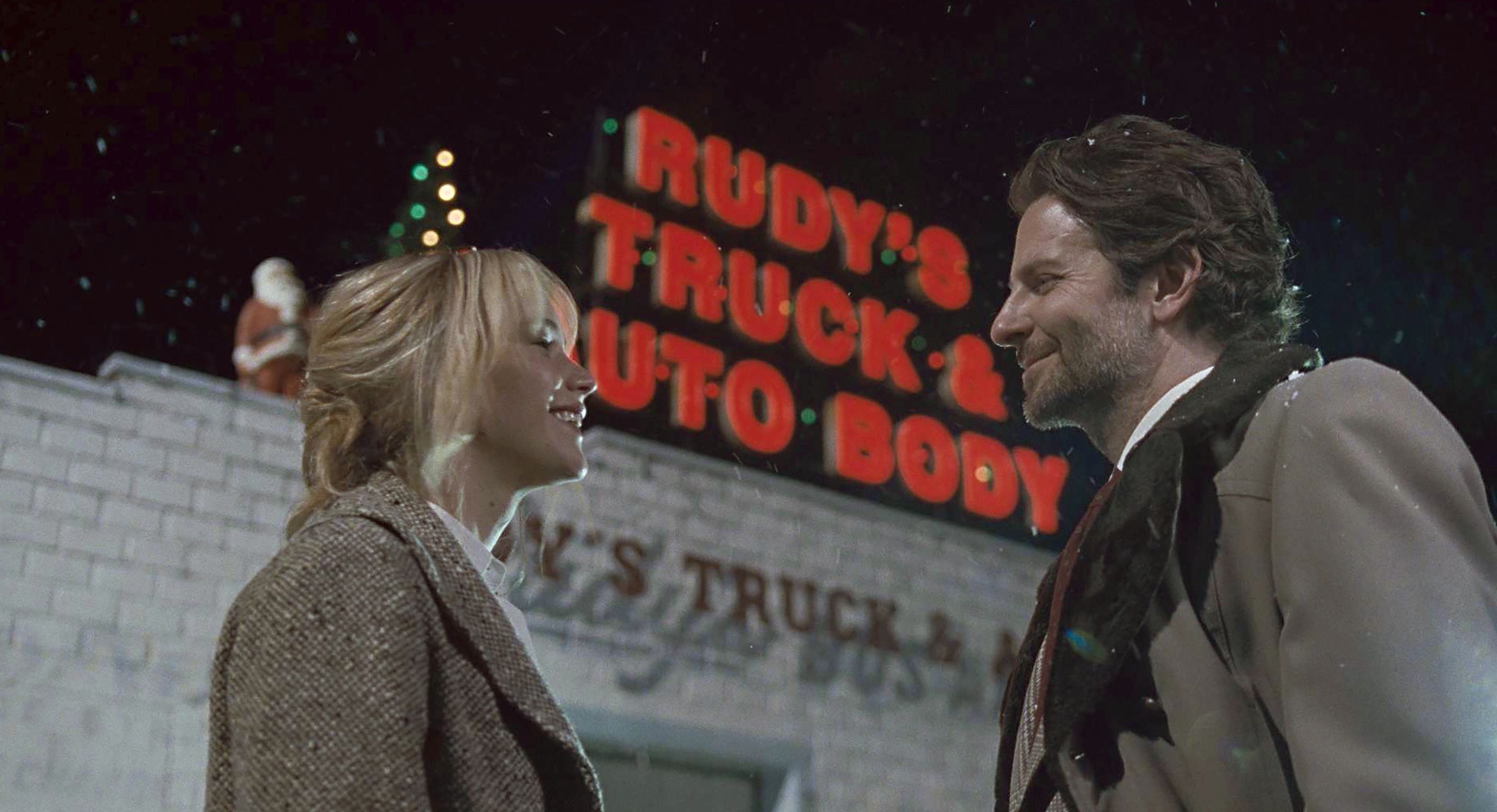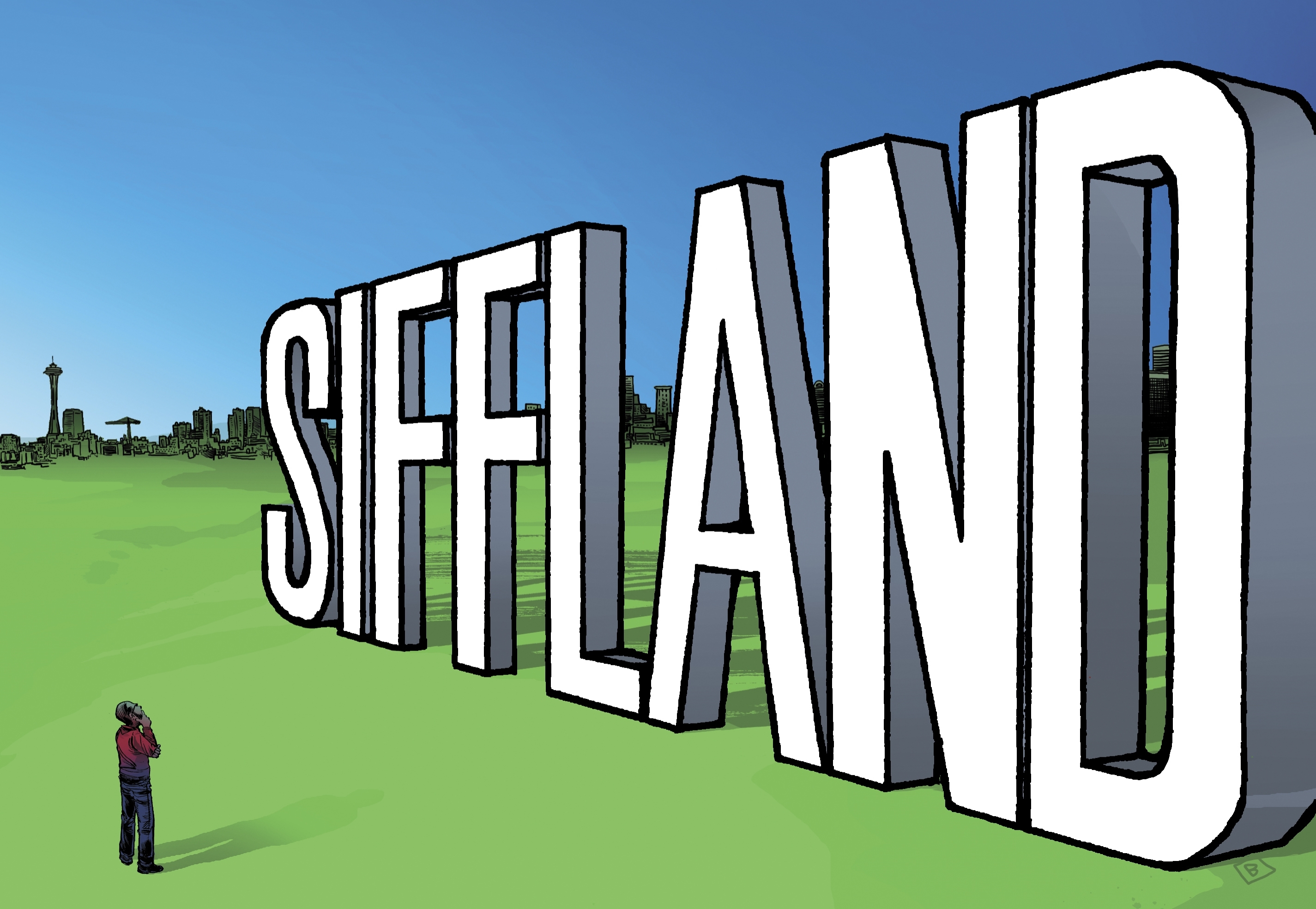Shop-window galleries generally don’t work for me. There needs to be one big, prominent work to stop a pedestrian long enough for an earnest look at what’s inside. On the south side of the Tashiro Kaplan Building, the Noxious Sector Projects window has done a good job featuring large, arresting installations (usually photography) since opening in June. This month, there’s a full-size portrait that resists every rule of portrait photography. No eye engagement, no acknowledgment of the photographer’s lens, no careful posing (or artfully staged anti-pose), no aspiring to beauty or personality or essence of character. This tired, schlubby salaryman, his office key card dorkily belt-mounted on a retractable reel, is simply lugging home some groceries from QFC after work. Eyes closed, exhausted, he looks like he’s earned his 12-pack of Miller, like he might drink it all in one sitting during a DVR marathon of The Office. The iPhone earbuds signal a world he’s trying to shut out, just as he’s doing his best to ignore photographer Neal Fryett, who actually asked him to do just that. The portrait is part of Fryett’s Paid to do what they were doing series, which describes exactly how he found his ordinary Seattle subjects (more are on his website). They result from a small monetary exchange that yields “not the decisive moment” of Henri Cartier-Bresson, per the curator’s statement, “but an instant noticed and prolonged, engineered and performed.” There’s no depth of humanity to discover, no clever correlation between shutter and gesture, but a kind of opacity—the photo that records everything, reveals nothing. It’s anti-photography in a way, which makes you study it all the more closely.
Paid to Do Nothing
Anti-photography.








